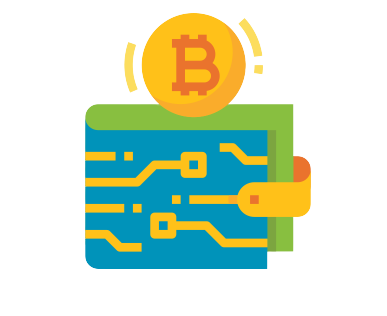
In the early years of Bitcoin, wallet options were limited. Pieces of paper with QR codes were popular. But as cryptocurrency has evolved, so too have Bitcoin wallets. Today digital wallets provide features that paper cannot.
This guide will explore the shift from primitive paper wallets to sophisticated digital wallet management. By embracing new solutions, you can more easily and securely participate in the exciting cryptocurrency revolution.
The Problems With Paper Wallets
Early Bitcoin adopters often used paper wallets to store funds offline. Also known as “cold storage,” paper wallets involve printing QR codes containing your private and public keys onto paper. Services like BitAddress.org and WalletGenerator.net help create paper wallets.
On the plus side, paper wallets are completely offline and immune to hacking. But there are also significant downsides:
-Difficult to securely back up multiple copies to avoid loss
-Vulnerable to theft if someone finds the paper
-Physical degradation over time from damage
-No mechanism to conveniently view balances
-Cumbersome to deposit and withdraw funds
For serious Bitcoin storage, paper wallets have serious limitations. Thankfully, technology has evolved to more advanced solutions.
Digital Wallet Security Innovations
Unlike paper, digital Bitcoin wallets leverage technology for enhanced security and convenience:

Secure element chips provide hardware-level safeguards for private keys.
Backup seed phrases make recovering lost wallets easier.
-Encryption and PIN codes prevent unauthorized access.
-QR codes and NFC enable quick in-person payments.
-Multi-signature protections distribute control across multiple keys.
-Optional online connectivity bridges cold storage with hot wallets.
-Remote wipe capabilities can erase wallets if devices are lost.
-And much more!
Digital solutions like the Ledger Nano X offer the best of both worlds: air gap protection combined with advanced features.
Tips for Managing a Digital Wallet
To fully utilize the benefits of digital wallets, keep these tips in mind:
-Carefully safeguard any recovery phrases as your last line of defence. Never digitally store them.
-Connect to the internet selectively when needed to limit exposure.
-Keep wallet software and firmware updated to patch newly discovered bugs.
-Use wallet features like whitelists, transfer confirmation, and multi-factor authentication for added protection.
-Store the bulk of holdings in cold storage, maintaining a small hot wallet for everyday transactions.
-Back up your wallet if switching devices by carefully transferring secrets or recovery phrases.
Just like using an online bank account, exercising prudence and security hygiene is important when interacting digitally.
The Future of Digital Asset Management
Digital currency is still in its infancy. Exciting innovations in wallet technology lie ahead:

-Integration with decentralized finance (DeFi) applications
-Built-in decentralized exchange (DEX) functionality
-Compatibility with smart contract platforms and dApps
-Leveraging AI to detect suspicious account activity
-Biometric security like fingerprint or facial recognition
-One day: quantum computing resistant encryption
-Wallets providing high security will remain the best Bitcoin wallet option.
Conclusion
The paper served its purpose in the early years of Bitcoin, but digital solutions open far greater possibilities. Modern hardware wallets like the Ledger Nano X provide the ideal combination of offline protection and technological convenience. By embracing digital wallets backed by reputable teams, you can confidently build your cryptocurrency portfolio.